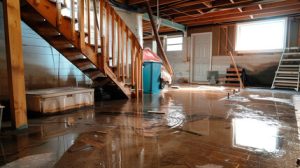Landscaping can make a home more attractive, livable and enjoyable. It can also increase its resale value.

A beautiful landscape encourages people to spend more time outdoors, which is good for their health. Incorporating native plants and trees promotes biodiversity and contributes to a balanced local ecosystem. It can also reduce cooling costs by shading the home and reducing wind. Contact Landscape Ontario for professional help.
Keeping up with the maintenance of your yard isn’t just an aesthetic choice. It has an impact on your property value and utility as well. Studies have shown that homes with aesthetically pleasing landscaping sell more quickly than those without. A well-maintained garden and outdoor living space can increase a home’s value by up to 15%.
Functionality is the process of enhancing or altering an area to improve its utility and appearance. This may include adding or removing plants, changing the soil composition, or creating structures. Landscaping services aim to balance these elements for a cohesive and appealing environment. They can help with the planning of drives, walks, lawns, shrubbery, gardens and flower-beds to form a beautiful setting for buildings and their occupants.
In addition, landscaping can make a property more energy efficient. For example, trees and green areas provide natural shade that reduces the need for air conditioning. Planting trees and grass in a strategic way can also reduce erosion. Incorporating drought-resistant species into the design is a smart way to minimize water consumption as well.
The purpose of a garden is to connect with nature and provide a place for rest, recreation, and meditation. With the right landscaping design, these spaces can be a place where family and friends come together. It is also a great opportunity to create a sense of privacy and tranquility for homeowners.
Landscaping also offers a variety of functions for people who live in cities or in high-rise apartments. With the rise of urban gardening and container planting, city dwellers have the ability to cultivate their own personal outdoor retreats in their homes. They can grow their own fruits, vegetables and herbs, while enjoying the fresh air and calming effects of nature.
Landscaping can help to combat environmental hazards such as invasive plants and weeds. It can also help to protect wildlife, such as birds and small mammals, by providing shelter and food sources. It can also prevent the spread of ticks, which carry Lyme disease. Landscaping professionals can help to mitigate these hazards by removing invasive plants and weeds and by planting native species that are resistant to pests.
Aesthetics
Landscape aesthetics is the visual appeal of outdoor spaces. It encompasses a wide range of design elements, from the scale and pacing of plant materials to the layout of walkways and paths. Landscape designers strive to create a sense of unity and harmony through the use of color, texture, shape, and line. They also consider the natural environment when choosing plants and trees, ensuring they will thrive in the local climate.
Unlike gardening, which is focused on caring for individual plants, landscaping focuses on creating entire outdoor environments. It’s an art form that enhances a home’s curb appeal and can even increase its value. By using a variety of plantings, incorporating water features, and adding architectural structures, landscapers can transform yards into relaxing retreats that complement the home’s architecture.
The term “landscape” encompasses the built and natural environments of humankind, ranging from small residential back gardens to entire municipal parks and theme parks. It also includes the savannah and rainforest ecosystems, which are part of the larger biosphere.
Landscaping can improve a person’s mood and wellbeing through its aesthetics. It can increase concentration, reduce stress, and improve sleep quality through its ability to create a tranquil atmosphere. In addition, it can promote physical activity by encouraging people to spend more time outdoors.
A well-designed landscape can create a unique aesthetic that reflects the personality of the homeowner. For example, a backyard garden can incorporate herbs, vegetables, flowers, and trees that reflect the owner’s personal style and tastes. It can also serve as a conversation starter when entertaining guests.
Whether it’s a tranquil pond or an artistic sculpture, focal points help to draw the eye and inspire a deeper connection with nature. They can also add a sense of drama and intrigue to the landscape. For example, a fountain or pond can create a serene environment and a soothing soundtrack that channels the mind away from daily stresses.
Aside from creating an inviting and harmonious environment, landscapes can also support the ecosystem by absorbing pollutants and releasing oxygen. Furthermore, they can help to control erosion and provide shade and food for wildlife.
Maintenance
Landscaping is a long-term investment, so regular maintenance is key to keeping it looking its best. From mowing and trimming to fertilization, pest control, seasonal adjustments, and more, professional landscapers can help with all the details of maintaining your outdoor spaces.
In addition to ensuring that your plants are healthy and vibrant, landscaping maintenance can also prevent safety hazards. Overgrown trees or shrubs can block walkways or obscure lighting, making it difficult for people to move around the property safely. Keeping on top of maintenance tasks like weeding, watering, and pruning can keep your landscape safe for all of your residents and visitors.
A well-maintained landscape can make your community more livable, increasing its value and attracting potential residents. It can also encourage residents to get outside and be active, improving their health and wellbeing. Studies have shown that communities with ample greenery have lower stress levels and increased social connectivity.
Maintenance includes a wide range of activities to keep your landscape healthy and attractive, including pruning, watering, mowing, weeding, pest management, and more. Depending on the type of landscape you have, it may also include design elements, such as creating pathways and using decorative stones or ornamental fencing to add interest to your space. Smart technology can help with the maintenance process, as there are apps available that can monitor soil conditions, send alerts for plant diseases and pests, and suggest mowing or trimming schedules.
While low-maintenance landscapes are designed to reduce the amount of time and effort required for upkeep, it’s still essential to establish regular maintenance routines. This includes inspecting and repairing any damage, regularly mowing and trimming, and removing weeds to promote growth and avoid competition for nutrients and water. It’s also important to keep up with regular garden care, such as fertilizing and mulching, to ensure that your landscape is healthy and thriving.
Choosing the right landscape maintenance vendor is crucial to achieving your property’s goals and vision for the future. You need a partner who understands the importance of ongoing upkeep, is a good fit for your community’s culture and values, and can provide consistent high-quality services. Use our easy-to-use RFP templates and board ready packet with side-by-side vendor comparisons to find the perfect match for your community.
Sustainability
The goal of sustainable landscaping is to create a landscape that benefits the environment as well as people. This is accomplished by using plants that are well-suited to the climate of a region, conserving water and avoiding fertilizer use, and creating habitats for native wildlife. These practices are increasingly common in commercial property landscapes.
Incorporating these elements into the design of a commercial property can make it more energy efficient and reduce operational costs. For example, trees can help block cold winds that would otherwise blow through a building, which helps save on heating costs. Similarly, a landscape that uses trellises to support climbing vines can shade an area and reduce its heating needs.
Another way to be more sustainable is by choosing low-energy input materials for non-vegetative landscaping elements, such as reclaimed or recycled pavers or wood for decks and retaining walls. This reduces the amount of energy consumed and greenhouse gases emitted during the production, installation and maintenance of the landscape. This practice also minimizes transportation emissions and resources extracted from the land.
Planting a diversity of native plants is another important aspect of sustainable landscaping. These plants are well-adapted to the local climate conditions and require less water and fertilizer than exotic species. Moreover, native species are naturally resistant to insects and pests and promote a healthy ecosystem.
Other landscaping elements that contribute to sustainability include rain gardens and bioswales, which are designed to collect and soak up stormwater runoff rather than rushing it into the stormwater system or nearby streams and rivers. These features can reduce flooding and property damage, as well as lower the burden on municipal stormwater management systems.
Taking these measures can also reduce maintenance and operational costs. For instance, using mulch instead of bare ground helps to retain moisture and prevent weed growth, thus reducing watering and fertilizer needs. Additionally, incorporating natural features like a meandering stream or pond can decrease the need for irrigating these areas.
Many of these sustainable techniques are simple and easy to implement in the commercial landscape. Property managers can start by establishing short-term goals for their site and celebrating each one of them as they are achieved. For example, property teams can replace turf with grasses that need less water to thrive and use native wildflowers and native berry species in place of non-native flora.


